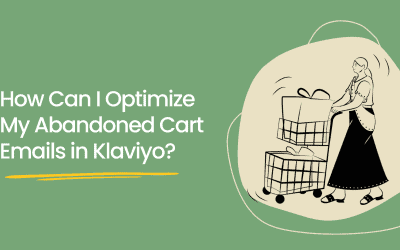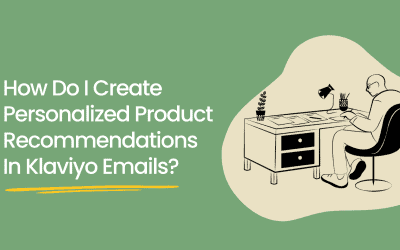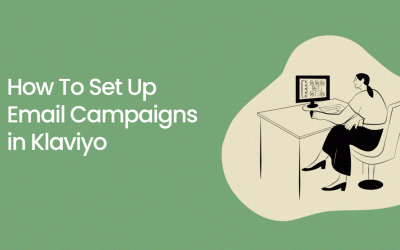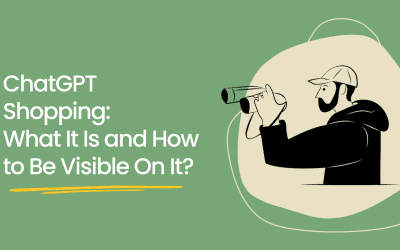Are you considering advertising your business online? You’ve seen the ads that clutter up search engine pages and social media and you’re thinking about leveraging them to reach more potential customers.
But how do you decide which method of targeting your customers is right for you? Is it Facebook Ads or Google Ads? Both offer a variety of ways to reach potential customers, but one might be more suitable for your specific needs.
In this guide, we will explore the pros and cons of each platform so that you can determine if Facebook Ads vs. Google Ads is the best fit for your business!
The Differences Between Facebook Ads and Google Ads
The main difference between Facebook Ads and Google Ads is the type of audience they attract. Google Ads are based on search terms typed into the search engine, while Facebook Ads are based on user profiles.
Therefore, Google Ads are particularly useful for businesses looking to target users searching for specific keywords, whereas Facebook Ads are better suited for businesses looking to target people with certain demographics and interests
But let’s break that down a bit further.
Overview of Facebook as An Advertising Platform
Facebook’s parent company, Meta, has a dominant presence in the social media landscape. The platform’s sheer reach makes it an incredibly powerful advertising tool for businesses looking to target specific audiences.
Facebook Ads have the potential to reach over a billion people in one campaign, making it an ideal platform for businesses looking to reach a large yet targeted audience.
You have a variety of options when it comes to targeting your ads to specific audiences, including demographics, interests, behaviors, and more.
The platform offers a range of ad formats, including sponsored posts, carousel ads, and video ads.
Pricing for Facebook Ads is based on either a cost-per-click (CPC) or cost-per-impression (CPM) model, with you paying each time a user clicks on your ad or each time your ad is displayed to users, respectively.
Overview of Google as An Advertising Platform
Google Ads, on the other hand, allows you to place ads on the Google Search and Google Display networks.
You can target your ads to specific audiences using keywords, demographics, interests, and other factors.
The platform offers a variety of ad formats, including search ads, display ads, and video ads. Pricing for Google Ads is based on a CPC model, with you paying each time a user clicks on your ad.
The Google Ads platform also allows you to launch video advertising campaigns on YouTube, giving you the opportunity to reach an even broader audience.
That covers the basics of each platform. Now, let’s take a look at where each of them stands out and how you might leverage them best for your business.
Where Google Ads Shine
Google makes most of its money by selling advertising. And it makes more money selling advertising than any other single company in the world.
We’re talking about the world’s largest technology company and they make most of their money from ads.
That’s just a way of introducing the first reason Google Ads are such a powerful tool:
Google Ads Let You Reach a Massive Audience
Google Ads are seen by people all over the world and you can target audiences across multiple countries. This gives you the opportunity to tap into global markets and reach customers in areas you may not have been able to reach via traditional methods
Targeting With Surgical Precision
Google Ads offers something for every business and every potential customer at every stage of the buying journey. By bidding on broad keyword search terms like “project management software,” you can reach prospects in the early stages of product research and fill the top of your sales funnel.
You can also expand your customer base by bidding on long-tail keyword search terms like “project management software for small businesses.” These tend to be less expensive and can be very effective for reaching people who are searching for exactly what you offer.
Or, even bid on your competitor’s brand terms to try to persuade users to switch to your brand. The possibilities are endless.
Google Ads Has Amazing Tools That You Won’t Find Anywhere Else
Google has tools that provide more (and better) data and insights than you’ll find anywhere else.
Keyword Planner is the best example, which provides unparalleled access to search term performance but you’ve also got the Analytics platform to gather and analyze data from your properties.
Post-click Landing Page Experience
This is one of the most underappreciated features of Google Ads by beginners but it’s one that experienced marketers rely on heavily.
When someone clicks on your Google ad, that ad obviously leads them to a landing page and Google’s systems will track what happens next and whether that results in a conversion or not.
If your landing page is converting poorly for some ads but better for others (or vice versa), Google will take that into account and try to match the right landing pages with the right prospects.
Wasted clicks are wasted money, so conversion optimization is a crucial part of any digital marketing strategy. And Google Ads helps you along the path to better conversion rates.
Where Facebook Ads Shine
Facebook, like Google, offers an ad platform with significant reach and targeting capabilities. That said, it also has its own advantages that may make it the better fit for your business
Targeting Social Media Users
Facebook Ads are best for reaching users who are already active and engaged on the platform. There are 1.59 billion (give or take a few hundred million) active users on Facebook, so you’ve got no shortage of potential customers to target.
Also, Facebook’s detailed targeting options, which allow businesses to reach specific audiences based on demographics, interests, behaviors, and more, may be more effective for your goals compared to Google’s keyword-based targeting.
Facebook Ads Have Tons of Ad Formats
You can create ads in many different formats, including carousels, single images, videos, stories, and more. This allows you to play around with different ad formats to see what works best for your business
Focus on Engagement
Facebook’s algorithms prioritize engagement, meaning that your ads are more likely to be seen by more people if they are getting likes, comments, and shares.
This means that if you create content that resonates with your audience, it will be much more effective in terms of reaching more people and driving results. To maximize the impact of your Facebook Ads, it’s important to focus on creating high-quality content that engages and resonates with your target audience.
Ease of Use
Facebook’s ad management interface is very beginner-friendly.
It’s designed to be user-friendly and easy to use, with an intuitive interface and a range of resources and support options to help businesses get up and running quickly. Some key features of the platform that contribute to its ease of use include:
- Ad creation tools: Facebook provides a range of ad creation tools that allow businesses to create and design their ads quickly and easily. This includes options for adding images, videos, and other media, as well as customizable templates and design options.
- Targeting options: Facebook’s detailed targeting options allow businesses to reach specific audiences based on demographics, interests, behaviors, and more. These options are easy to use and allow businesses to create targeted campaigns with minimal effort.
- Ad performance tracking: Facebook provides a range of tools for tracking and analyzing key metrics, including clicks, impressions, conversion rates, and more. This allows businesses to understand how their ads are performing and make informed decisions about their advertising strategy.
- Support resources: Facebook offers a range of support resources, including online tutorials, help centers, and community forums, to help businesses get the most out of the platform.
When You Should Use Google Ads
While both platforms have their strengths and can be effective for reaching specific audiences, there are certain instances in which Google Ads may be a superior choice. Here are a few examples:
- If your business relies heavily on search traffic: If you depend on search traffic to drive website visitors and sales, Google Ads may be the better choice. Google is the dominant search engine, and advertising on its search network can help you reach people who are actively searching for specific products or services.
- If your business has a primarily B2B focus: If you primarily sell to other businesses (B2B), Google Ads may be a better fit. Google is typically used more for business-related searches, and advertising on the platform may be more likely to reach your target audience.
- If your business operates in a competitive industry: If you operate in a highly competitive industry, Google Ads may be a better choice because it allows you to bid on specific keywords that your target audience is already searching for. This can help you stand out from your competitors and reach the right people with the right message.
When You Should Use Facebook Ads
On the other hand, there are also very good reasons to choose Facebook ads for your business.
- You need to reach a specific type of person: Facebook Ads are effective at reaching a specific audience because the platform offers detailed targeting options that allow businesses to reach specific groups of people based on a range of factors.
For example, you can target its ads to people of a specific age range, gender, location, or language. It can also target ads to people based on their interests and behaviors, such as those who have shown an interest in a particular topic or product category. - You want to boost brand awareness: Facebook’s algorithms prioritize engagement, meaning that ads that receive likes, comments, and shares are more likely to be seen by more people. This can be particularly useful for businesses that are looking to increase their brand’s visibility and engage with their audience.
- Retargeting: The platform offers a range of tools and features that make it easy for you to show ads to specific groups of people who have already engaged with your brand or visited your website. This includes features like Custom Audiences, which allows you to create a list of people to target based on information they have shared with you, and Website Custom Audiences, which allows you to show ads to people who have visited your website. Additionally, Facebook’s Lookalike Audiences feature allows you to target people who are similar to your existing customers or website visitors. These features make it easier for you to reach and convert specific groups of people who are already interested in your products or services.
Conclusion – Facebook Ads vs. Google Ads
Overall, deciding between Google Ads and Facebook Ads ultimately depends on your business’s needs.
If you rely heavily on search traffic or operate in a competitive industry, then Google Ads may be the better choice for you.
However, if you need to reach a specific type of person or want to boost brand awareness, then Facebook ads may provide more targeted options and features that can help you meet your goals.
Ultimately, understanding how each platform works and what it offers will help you make an informed decision about which one is right for your business.






0 Comments